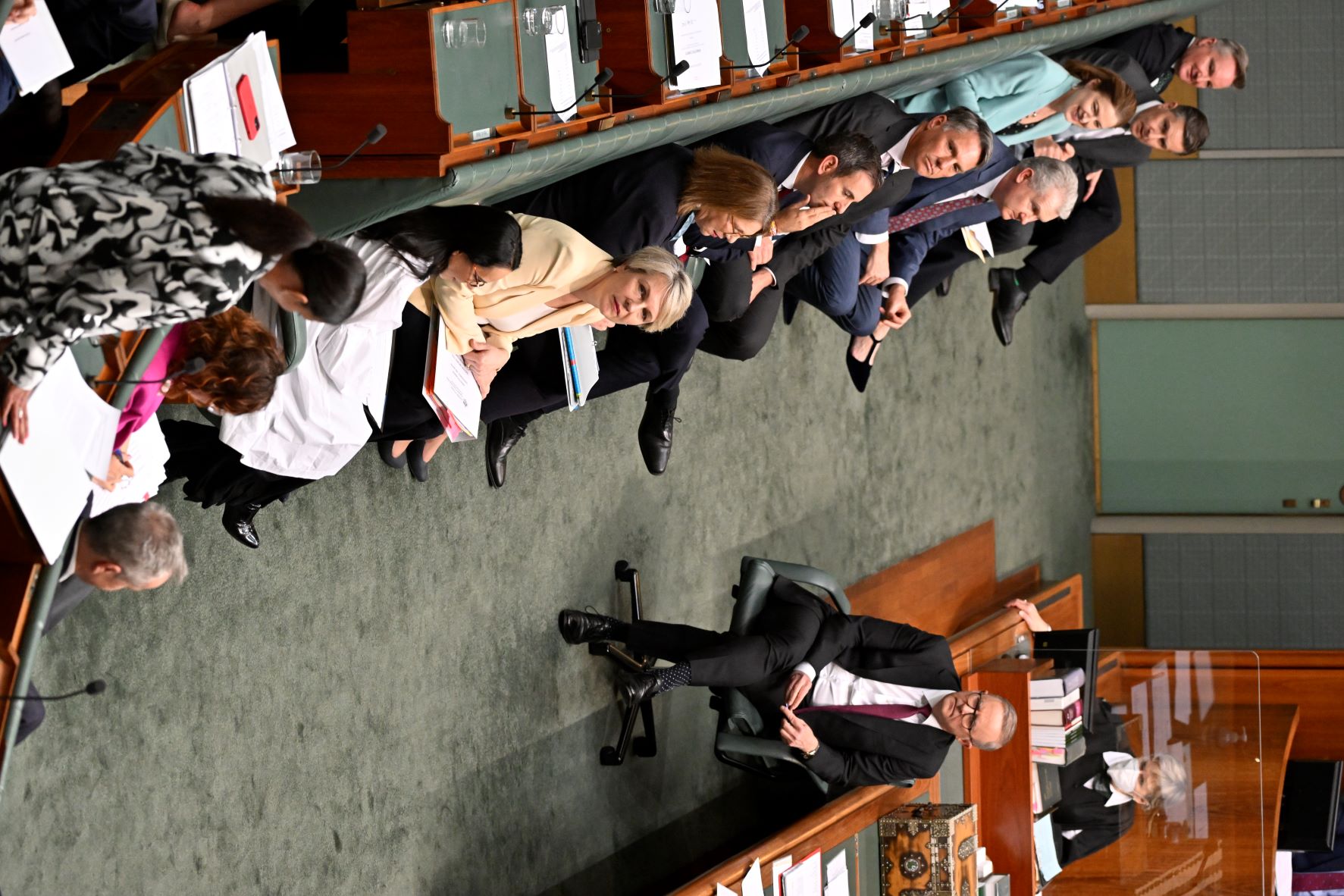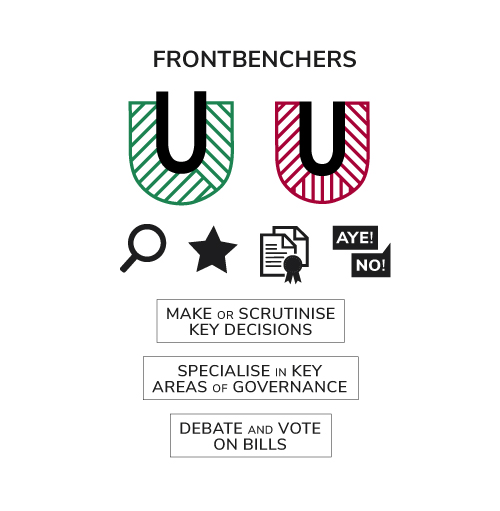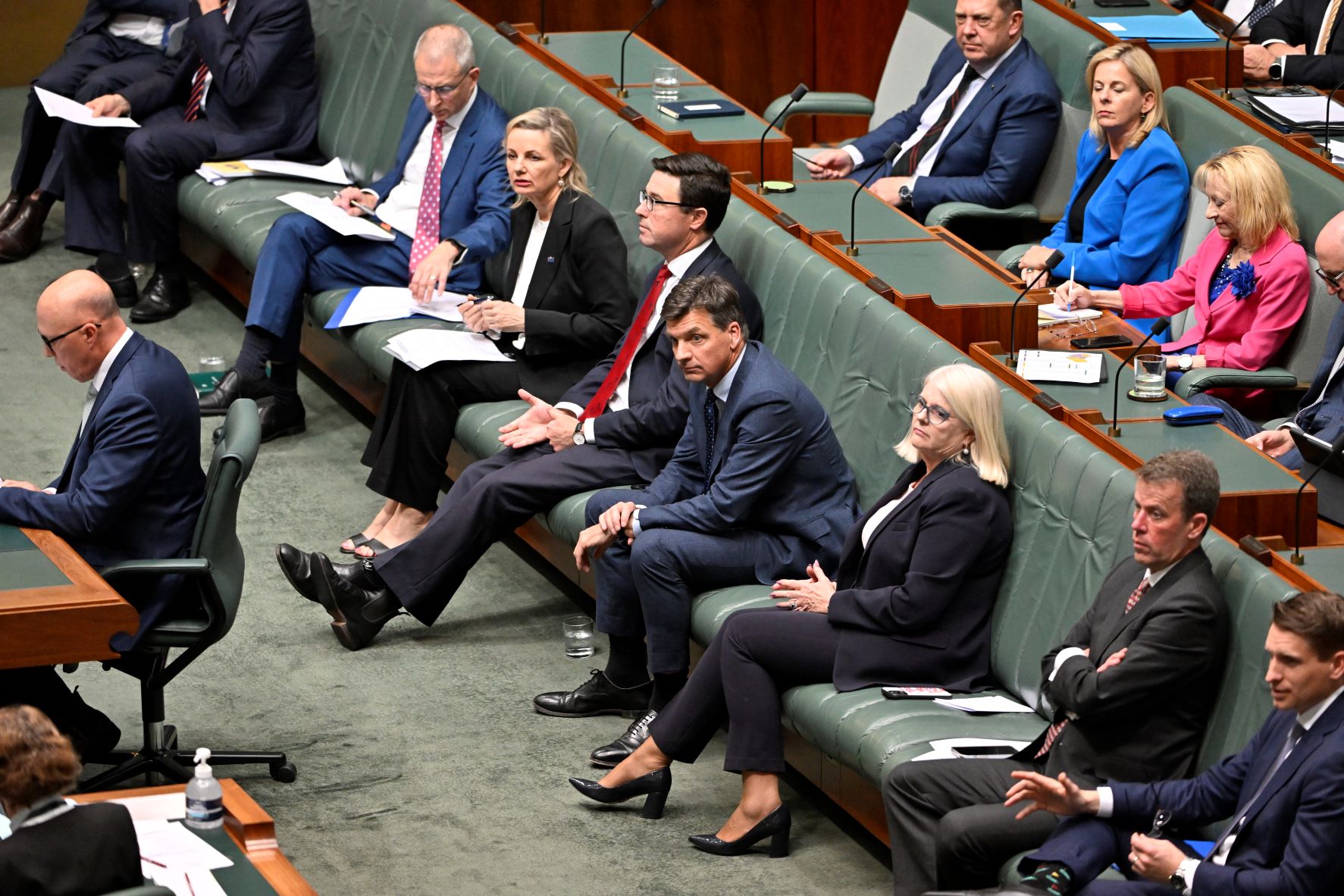Ministers and shadow ministers
Understand the role of minsters and shadow ministers with this fact sheet. It describes what a minster is, how they are chosen and what their role is.
What will I learn?
- Ministers are in charge of an area of government responsibility.
- Ministers are experienced members of the government.
- Shadow ministers are members of the opposition who focus on a policy area.
Curriculum alignment
Year 7 ACHCK048
Ministers in the House of Representatives

DPS Auspic
Description
Ministers seated in the House of Representatives. Ministers sit on the front bench of the government side of the House of Representatives, behind the Prime Minister. Ministers introduce most bills to Parliament.
Copyright information
Permission should be sought from DPS AUSPIC for third-party or commercial uses of this image. To contact DPS AUSPIC email: auspic@aph.gov.au or phone: 02 6277 3342.
Role of frontbenchers in the Australian Parliament

Parliamentary Education Office (peo.gov.au)
Description
Ministers and shadow ministers are also known as 'frontbenchers' because they sit on the front bench of the Senate or House of Representatives. Ministers and shadow ministers make and scrutinise key decisions, specialise in key areas of governance, and debate and vote on bills.
Copyright information
This work is licensed under a Creative Commons Attribution-NonCommercial-NoDerivs 3.0 Unported License.
You are free to share – to copy, distribute and transmit the work.
Attribution – you must attribute the work in the manner specified by the author or licensor (but not in any way that suggests that they endorse you or your use of the work).
Non-commercial – you may not use this work for commercial purposes.
No derivative works – you may not alter, transform, or build upon this work.
Waiver – any of the above conditions can be waived if you get permission from the copyright holder.
What is a minister?
Ministers are members of the Australian Government who have been given an area of responsibility for how Australia is run. This area of responsibility is known as a portfolio. Examples of ministerial portfolios include:
- health
- environment
- transport
- defence
- foreign affairs
- trade
- immigration.
The Prime Minister and ministers are part of the executive government. The executive is responsible for developing government policy and putting government decisions into action.
Ministers are sometimes called frontbenchers, as they sit on the front row of seats in the House of Representatives or the Senate.
Role
Most ministers are in charge of a government department or help another minister to run a department. A government department is an organisation of people employed in the Australian Public Service such as the Department of Defence, Department of Education or Department of Finance.
Ministers:
- work with their department, community organisations and professional associations to prepare bills – proposals for laws
- explain why a bill is needed and how it will solve a particular problem. If the bill becomes a law, the minister and their department are responsible for putting the law into action
- are accountable for the actions of their department; if something goes wrong, they are expected to take responsibility for it.
Members of parliament can hold the government to account by examining the work of any minister and their department. Ministers must be able to appear in Parliament each day during Question Time and respond to questions about how the government is running Australia.
Ministers are required to attend Senate estimates hearings to explain the work of their department.
How minsters are chosen
The Prime Minister chooses experienced and knowledgeable government members to be ministers and expects them to work together on behalf of the government. There are usually about 20 ministers in the House of Representatives and 10 in the Senate.
Larger portfolios are given to the most experienced government members, and they become part of the Cabinet. Cabinet is the main decision-making group within executive government.
What is a shadow minister?
Shadow ministers in the House of Representatives

DPS Auspic
Description
Shadow ministers in the House of Representatives. Shadow ministers sit on the front bench of the opposition side of the House of Representatives.
Copyright information
Permission should be sought from DPS AUSPIC for third-party or commercial uses of this image. To contact DPS AUSPIC email: auspic@aph.gov.au or phone: 02 6277 3342.
Shadow ministers in the House of Representatives

DPS Auspic
Description
Shadow ministers in the House of Representatives. Shadow ministers sit on the front bench of the opposition side of the House of Representatives.
Copyright information
Permission should be sought from DPS AUSPIC for third-party or commercial uses of this image. To contact DPS AUSPIC email: auspic@aph.gov.au or phone: 02 6277 3342.
Shadow ministers are members of the opposition who scrutinise – closely examine – the work of the government and individual ministers. They are chosen by the Leader of the Opposition. Each shadow minister concentrates on the work of a particular minister and government department. They also act as the opposition spokesperson for the area they are assigned. Top-level shadow ministers form a shadow Cabinet which meets regularly to develop opposition policies.
If there is a change of government a shadow minister may become a minister. It is important for them to understand the work of the department they 'shadow' – closely follow – and consider how they would run their portfolio.
